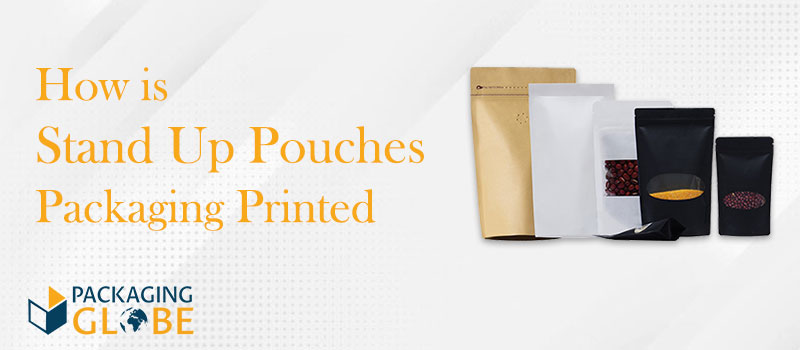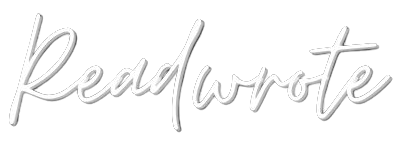
How is Stand Up Pouches Packaging Printed?
Are you using stand up pouches packaging, films, labels, or other flexible packaging solutions? You may not realize how many options you have when it comes to printing. Colors, text, and graphics can be added to compliant packaging supplies with various types of printing and curing technology.
Kraft paper stand up pouch supplies are often the subject of questions at Packaging Globe. In this article, we will discuss the many types of printing applications for flexible packaging materials and their substrata.
Below are some popular printing techniques that are used for flexible packages.
- Flexography
- Digital Printing
- Rotogravure
- Lithography
Flexography
The process of flexography (also known as flexo) uses a flexible plate, rather than a solid one. This is a newer form of relief printing. The use of flexible printing is widespread.
A common flexible packaging material that utilizes flexography is plastic. Another common flexible packaging material is stand up pouches packaging. Graphics, text, and images can be printed on nonporous materials for a variety of packaging applications using flexography.
Digital Printing
Digital printing involves the application of graphics and branding elements directly onto plastic substrates using ink-jet technology. Labels and cardboard inserts are no longer necessary with modern digital printing. As a result, waste is significantly reduced, inventory requirements are reduced, and speed to market dynamics is improved.
Black Kraft stand up pouches printing now supports variable and dynamic content thanks to digital printing technologies. Using this approach, you can target subgroups of consumers and buyers based on graphic and text applications.
Wait a minute, variable and dynamic content? Yes, you read that right.
By combining demographic, geographical, psychographic, and behavioral data with variable content, dynamic content further segments market segments into target sub-groups. Here is where real one-to-one communication takes place.
As well as swapping out content, dynamic content also modifies formats (fonts, spacing, colors, etc.) based on complex logic that identifies specific market segments based on multiple data points.
It is possible to achieve impressive results by using dynamic content. DM News found that Robert Morris University used dynamic content and pURLs to boost response rates among prospective students by 79% compared to generic campaigns.”
A dynamic piece of content is one that is automatically or manually updated based on very specific market information. A hyper-focused approach is then used to create content aimed at specific buyer personas, with the intention of enhancing the content’s effectiveness in influencing the buyer to buy.
Rotogravure
Rotogravure prints graphics by engraving them onto plates, forms, cylinders or other surfaces before applying them to the final substrate. An image carrier (such as a cylinder or plate) is used to engrave graphics, text, and other imagery.
The rotary printing technique used in rotogravure is similar to that used in flexography. It is used for a variety of applications, such as rotary printing magazines, newspapers, cardboard boxes, and a black matte stand up pouch. Stand up pouches are usually made with this process.
Lithography
In lithographic printing, oil is used to create the graphic, which is then affixed to a level plate. Acid is then applied to the plate.
Unprotected portions of the lithographic plate result in the etching of the image. After the plate is etched, water is applied, retaining the water in the etched areas.
The plate is then inked with oil-based ink. The ink sticks to the graphic because the water resists it.
This process is followed by the transfer of ink to a blank substrate. As a result, the graphic design is lithographically printed. While quite out-of-date, this method is still used to create artistic prints.
Polymer coatings are usually used today to create graphic elements that are applied to plastic or metal plates. On the palate, the graphic is mirrored or reversed. Moreover, offset lithography can be used to print graphics on flexible substrates (most commonly rubber).
Printing directly on flexible packaging supplies is not commonly done using lithography, but it is commonly done using labels that are then applied to flexible packaging supplies.
What is the Best Printing Method for Stand Up Pouches Packaging?
It is important that you meet with your selected printer and discuss the packaging materials you wish to be printed on when choosing a method of printing. One printing method may be better than another, depending on your design, graphic, and textual elements.
The benefits of flexography include low cost and fast turnaround time, especially if you do not have a large budget for printing. The image quality is poor, and gradients are often banded. Furthermore, flexography cannot produce photographic images of high quality.
As an alternative, lithography may be a better choice if you have a larger budget and want a high quality image without banding. Printing with lithography, unfortunately, can be expensive. A lithographic process is limited to flat surfaces, requires a long lead time, and is often very expensive.
You May Also Like

How To Build Your Own Metaverse
December 6,
Top Five Ways for the Customization of Muffin Boxes Wholesale
February 9,


